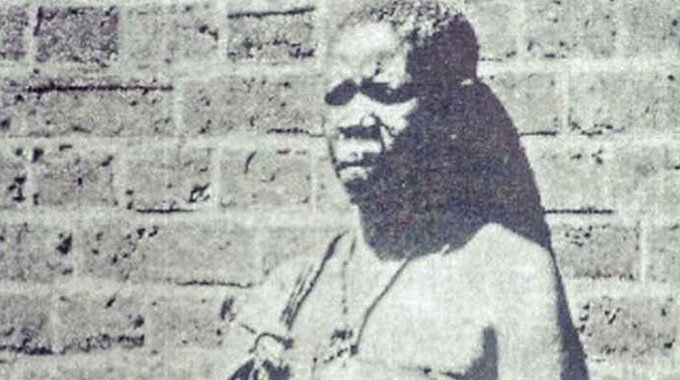Debra Matabvu
Senior Reporter
BRITISH authorities have granted Zimbabwe permission to repatriate the remains of First Chimurenga war heroes that were shipped to Europe during the early colonial period as war trophies The Government is now finalising preliminary arrangements for the return of the remains, marking a major milestone in the country’s efforts to restore the dignity of its early liberation heroes A high-level inter-ministerial committee comprising the Ministries of Home Affairs and Cultural Heritage; Finance, Economic Development and Investment Promotion; and Local Government and Public Works has been established to oversee the process Its mandate includes coordinating the repatriation process, mobilising resources and ensuring broad stakeholder consultation
The committee recently convened a meeting with traditional leaders and descendants of the fallen heroes to agree on appropriate cultural protocols and begin mobilising funding for the historic operation At the same time, plans are underway to construct a high-tech storage facility for the remains The facility will ensure that the remains are preserved in optimal condition upon their return to Zimbabwe, which is an important step given their historical significance and the need for respectful, long-term conservation To date, at least 11 sets of remains have been confirmed to be housed at the Natural History Museum in London
Two more are reportedly held at the Duckworth Laboratory, at the University of Cambridge, and at an unidentified institution in Switzerland The British museum has since agreed to hand over the 11 remains in its possession, which were taken to Europe following the Matabele uprisings and the First Chimurenga in the 1890s There are also new revelations that another set of remains, believed to be of Zimbabwean heroes, has been identified in South Africa The authorities are now working to verify their identity as part of a broader regional effort to retrieve all remains linked to Zimbabwe’s early resistance movements
The development comes as Zimbabwe prepares to commemorate Heroes Day tomorrow, a national holiday that honours those who sacrificed their lives for the country’s liberation and post-independence development In an interview with The Sunday Mail, Permanent Secretary in the Ministry of Home Affairs and Cultural Heritage Ambassador Raphael Faranisi said the repatriation process had entered its first phase “We have started the first phase of the process, which we hope will be done in the shortest time possible,” said Amb Faranisi “Recently, we met to discuss resource mobilisation and the construction of a storage facility that will help preserve the remains once repatriated
“There will also be a formal programme for the repatriation, which will be presented to the relevant authorities for approval “We have consulted with traditional leaders and descendants to ensure the process respects cultural and historical sensitivities.”
He added that efforts were also underway to begin the identification of remains recently discovered in South Africa “All this will be done within the shortest time possible, and once completed, we will submit the recommendations to Cabinet for further guidance,” he said A senior official from the National Museums and Monuments of Zimbabwe (NMMZ), who spoke on condition of anonymity, confirmed that formal repatriations can now begin following approval from most of the holding museums
“We met two weeks ago with representatives from the Ministries of Finance and Local Government,” the official said “The meeting was also attended by traditional leaders and descendants of the war heroes “We have now received confirmation from the UK museums that we may take back the remains “The next stage involves finalising the budget and timeline for the repatriation process.”
The remains, believed to be of First Chimurenga war heroes, were shipped as war trophies to Europe during the early colonial years
Some of the skulls are understood to belong to early leaders of the struggle against colonialism, including Mbuya Nehanda, Sekuru Kaguvi, Chief Chinengundu Mashayamombe and Chief Makoni Chingaira During the colonial era, British forces beheaded many leaders of the resistance, publicly displaying their heads as a means of intimidation These skulls were later taken to Europe, where they were kept for study and display For years, Zimbabwe has lobbied for the return of these remains, viewing their continued presence in foreign institutions as a painful symbol of colonial plunder and historical injustice
In 2019, the Natural History Museum in London submitted a detailed archival report to Zimbabwean authorities, tracing the origins of several remains in their collection The report, compiled by a team of British experts, relied on documentation from British and South African archives to identify the skulls and link them to known historical figures Zimbabwe’s repatriation effort follows similar campaigns by other African nations In 2018, Namibia successfully repatriated the skulls and remains of Herero and Nama tribespeople used in German racial experiments during the colonial era
The remains were returned from German institutions, decades after the 1904-1908 genocide that claimed the lives of more than 75 000 people More recently, the United Kingdom returned 32 stolen gold and silver treasures to Ghana’s Asante Kingdom The artefacts, looted during 19th-century clashes, were returned on a six-year loan from the British Museum, and the Victoria and Albert Museum Share on Facebook
Post on X
Follow us
Save
Originally published on Business Weekly
All Zim News
All Zim News is a central hub for all things Zimbabwean, curating news from across the country so no story is missed
Alongside aggregation, our team of nationwide reporters provides real-time, on-the-ground coverage Stay informed and connected — reach us at admin@allzimnews.com.
Source: Businessweekly
